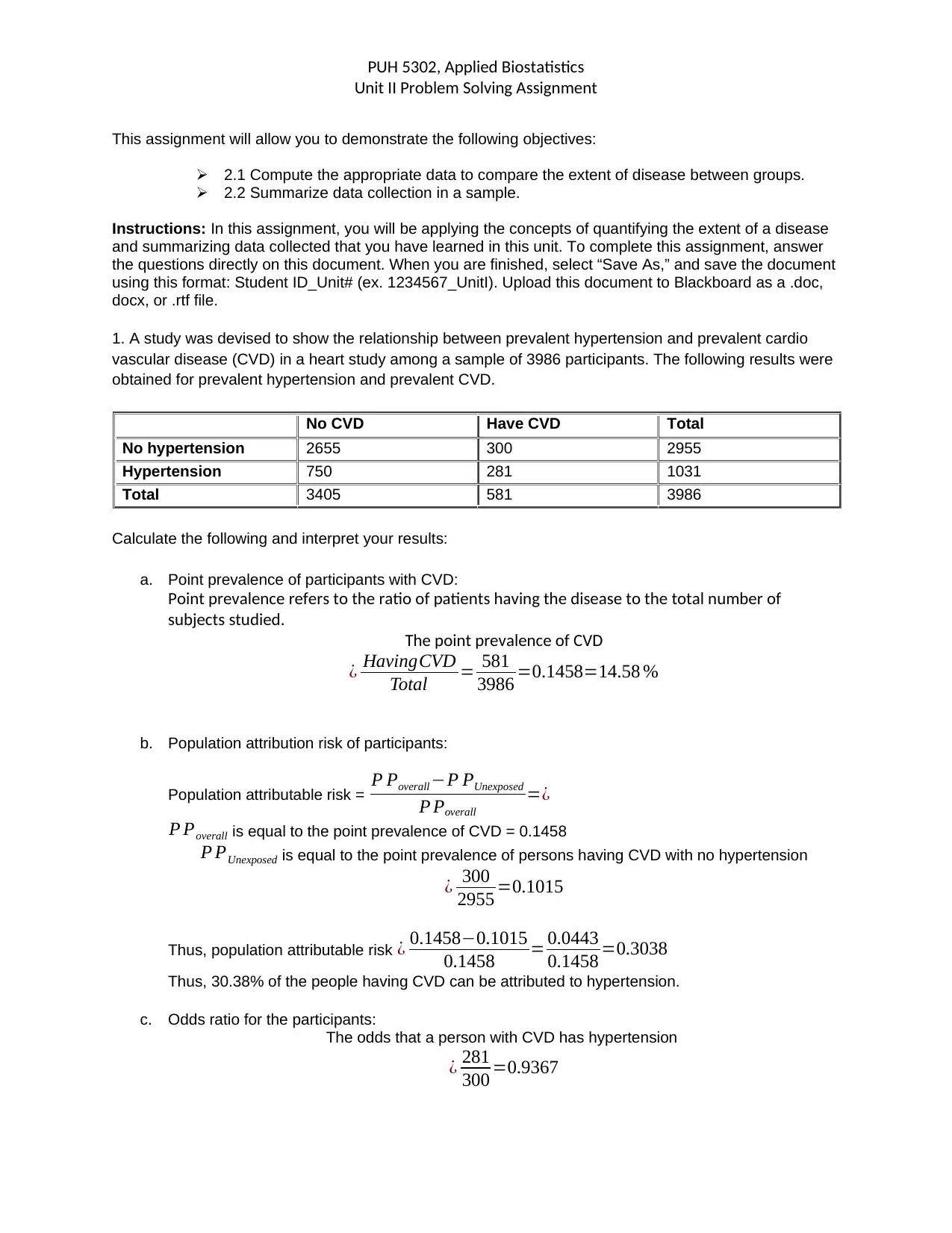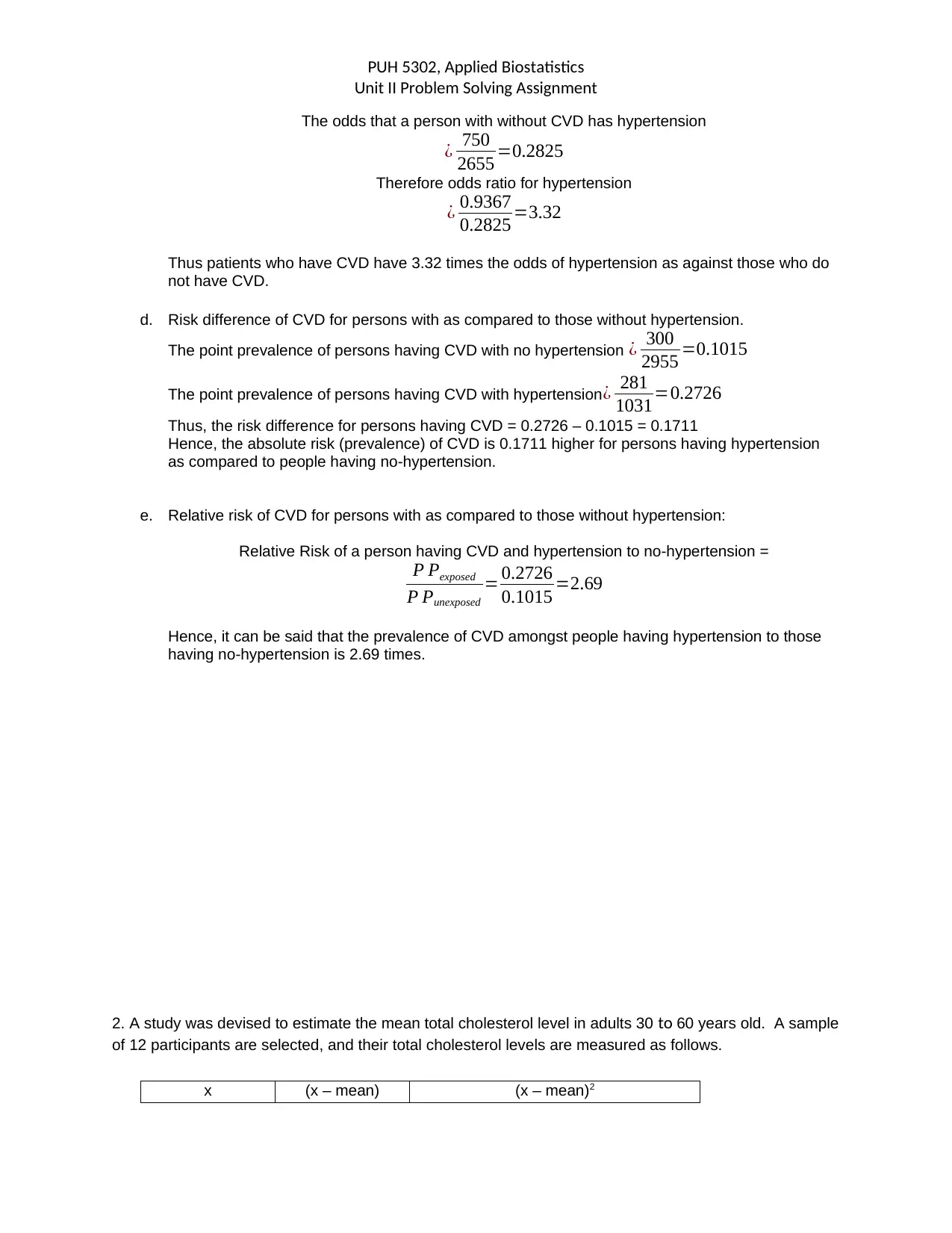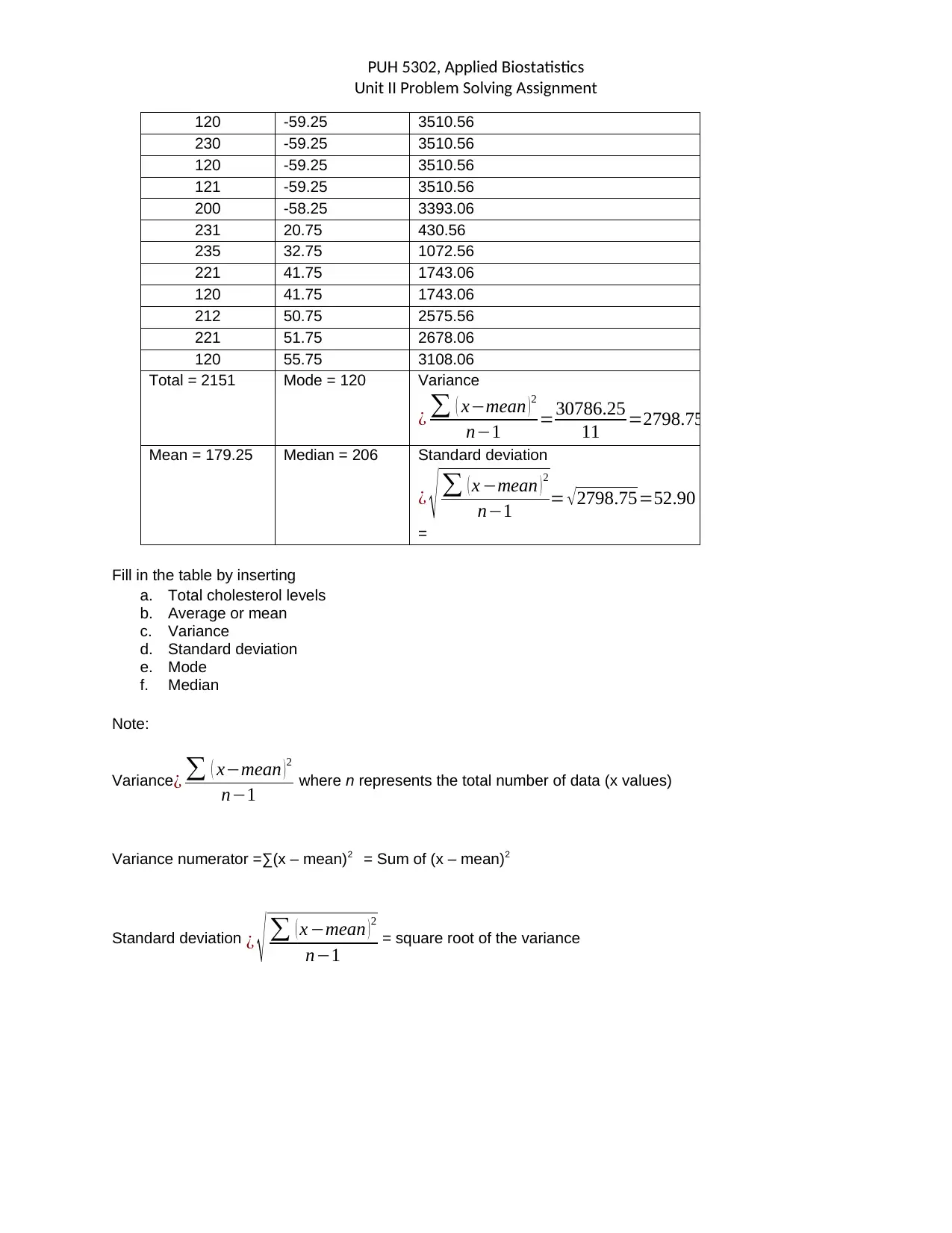Applied Biostatistics Assignment
VerifiedAdded on 2022/11/29
|3
|617
|241
AI Summary
This assignment focuses on applying the concepts of quantifying the extent of a disease and summarizing data collected in the field of biostatistics. It includes calculations and interpretations of point prevalence, population attribution risk, odds ratio, risk difference, and relative risk.
Contribute Materials
Your contribution can guide someone’s learning journey. Share your
documents today.
1 out of 3






![[object Object]](/_next/static/media/star-bottom.7253800d.svg)